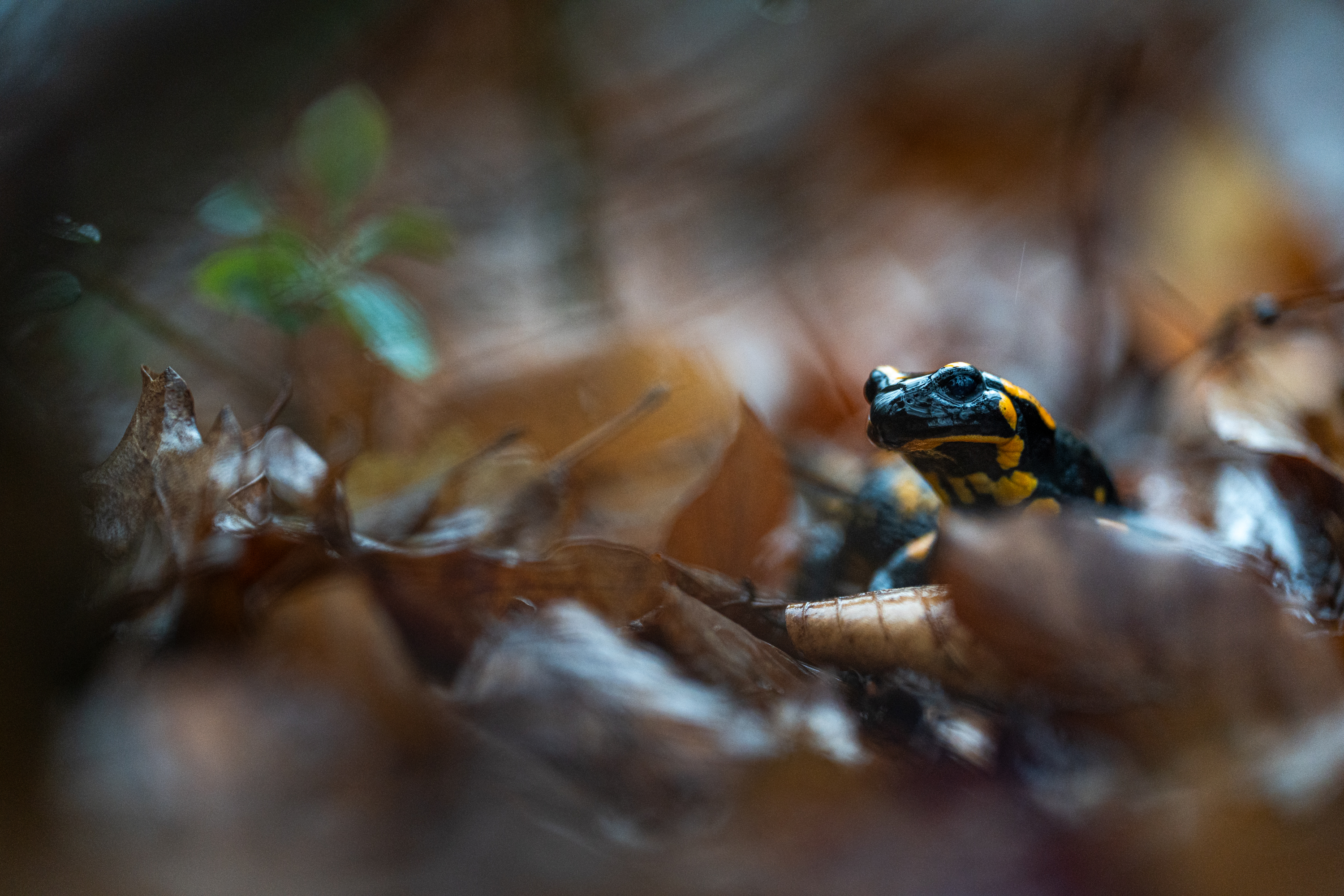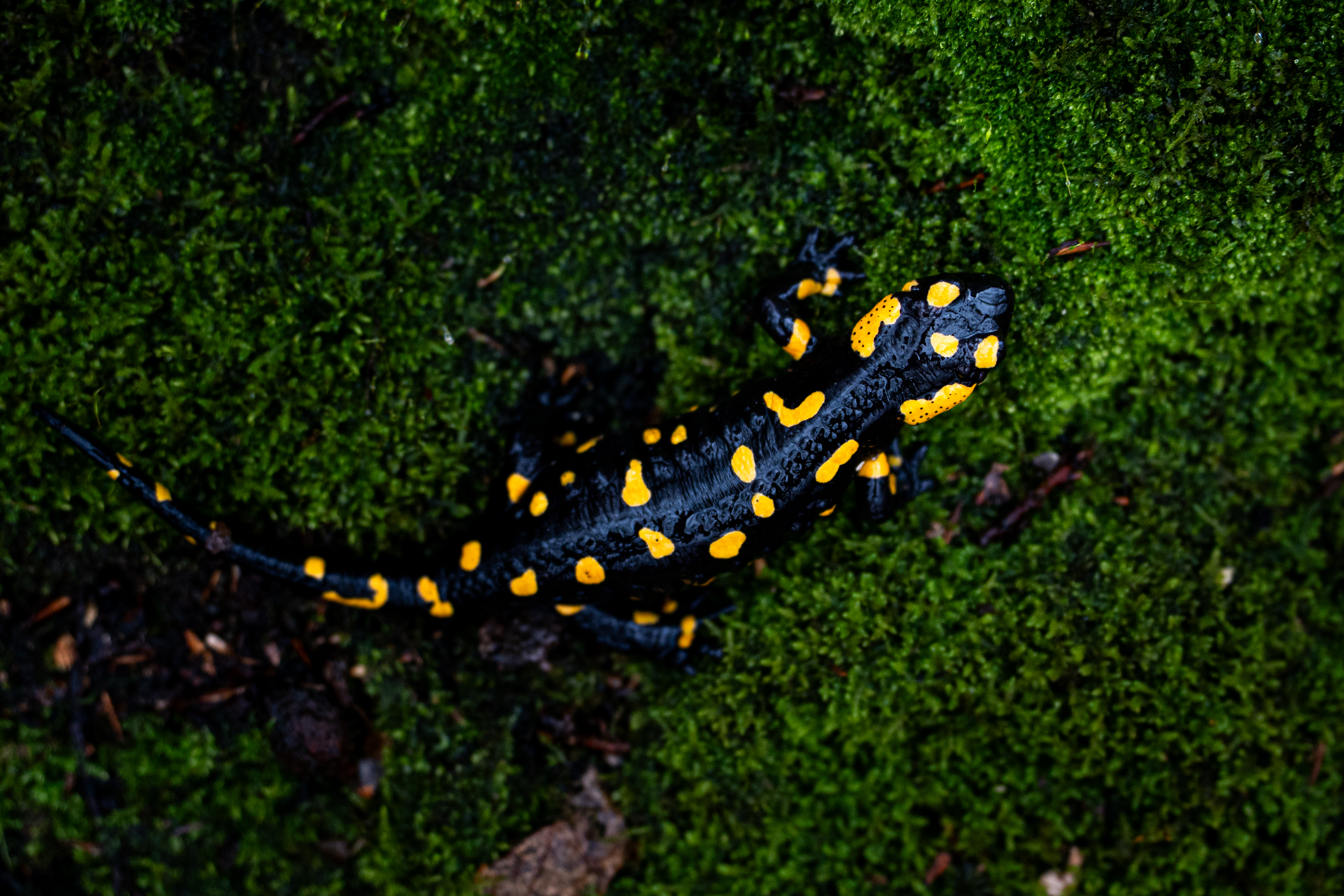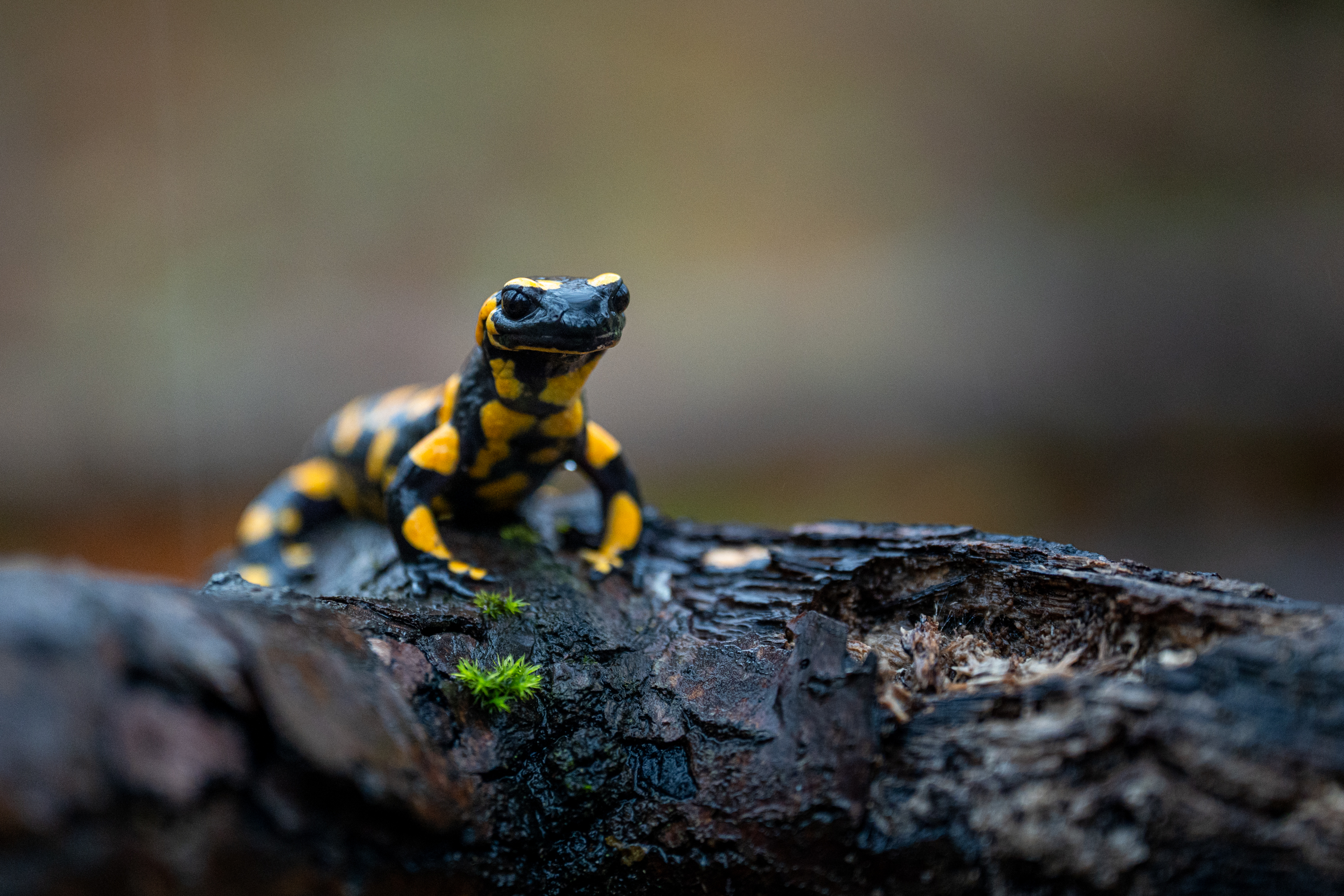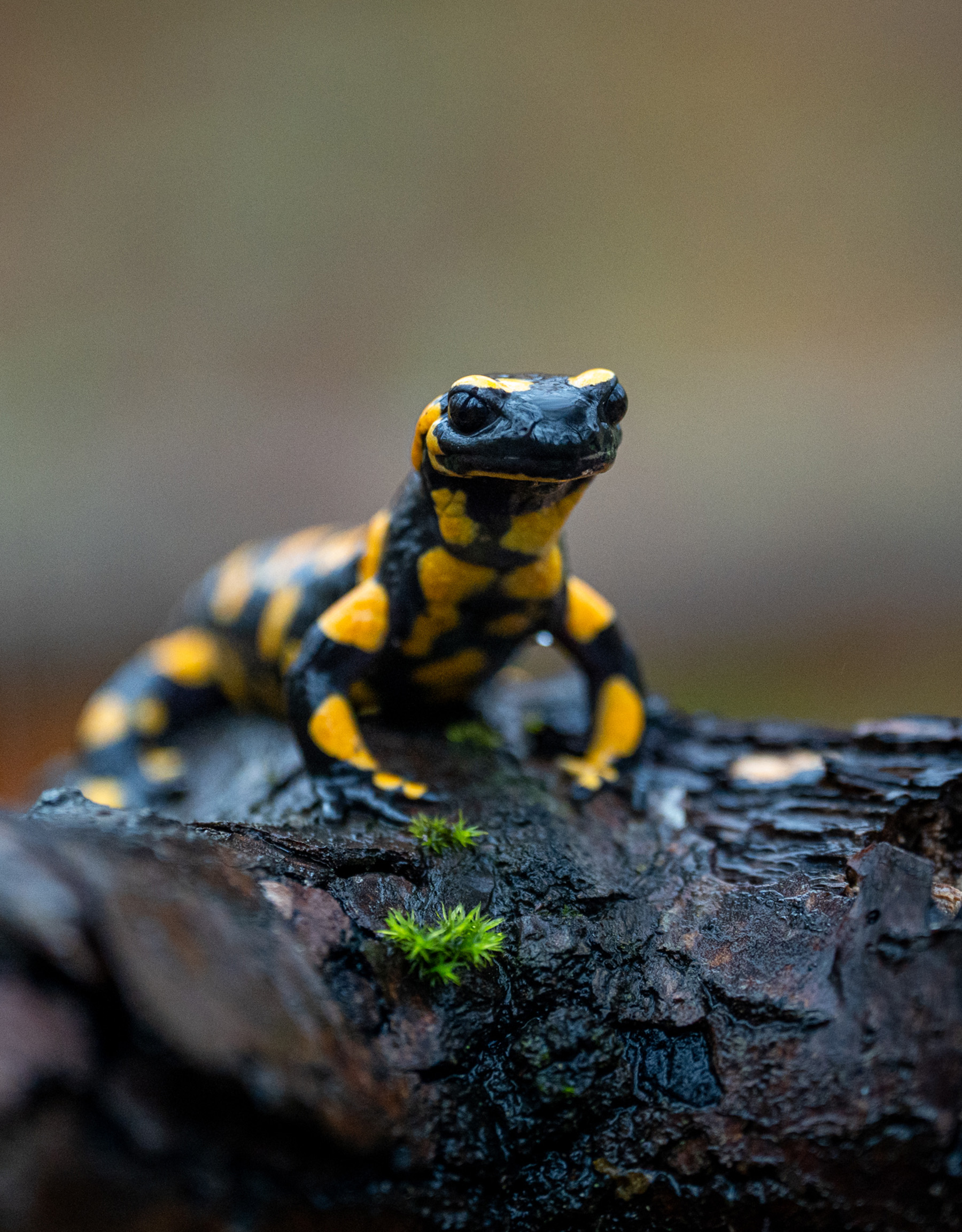Polarizers are mostly associated with landscape photography, but they can also be a useful tool in wildlife photography.
A polarizer is used to minimize or completely remove reflections. This is particularly useful when photographing animals near bodies of water or when out in the field after a rain shower. It helps make the subject appear clearer and more natural.
By using a polarizer, colors and contrasts are significantly enhanced, and the images become more vivid.
Many large telephoto lenses have a dedicated filter slot to use polarizing or ND filters. While it can be useful to use filters with super-telephoto lenses from time to time, I personally prefer using polarizers with shorter focal lengths, especially when photographing amphibians.
Here’s a brief comparison of why I use polarizers in wildlife photography:


The time of amphibian migration in spring is the best opportunity. To demonstrate the use of polarizers in wildlife photography, I set out in search of fire salamanders. The only problem, of course, is that fire salamanders are only active during the day when it rains — which means, for me as a photographer: I have to get wet.
Fire Salamander on Moss.

Again, unwanted reflections are wonderfully reduced, and you get rich, vibrant colors.
The important thing on such days is, of course, to screw the polarizer onto the lens at home beforehand to prevent water droplets from getting between the lens and the filter.
Especially in the wet forest, polarizers like the NiSi HUC C-PL help to make the colors really rich and minimize reflections on the amphibians.
So, if you plan on going amphibian photography, don't forget your polarizer and your rain jacket! ;)



